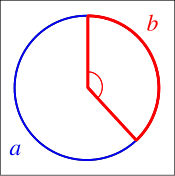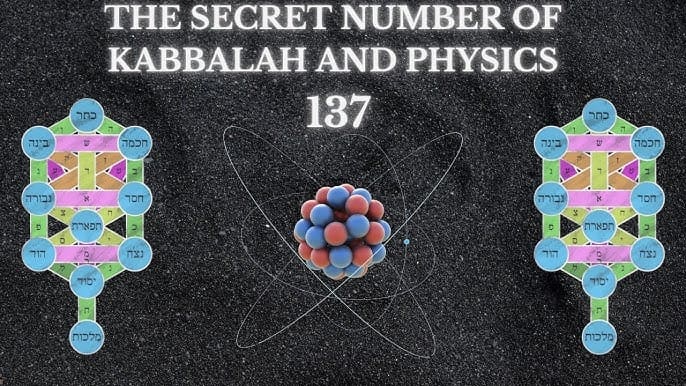the 33rd prime number; the next is 139, with which it comprises a twin prime, and thus 137 is a Chen prime.
Physicist Leon M. Lederman numbered his home near Fermilab 137 based on the significance of the number to those in his profession. Lederman expounded on the significance of the number in his 1993 book The God Particle: If the Universe Is the Answer, What Is the Question?, noting that not only was it the inverse of the fine-structure constant, but was also related to the probability that an electron will emit or absorb a photon—i.e., Feynman’s conjecture.[n 1] He added that it also “contains the crux of electromagnetism (the electron), relativity (the velocity of light), and quantum theory (the Planck constant). It would be less unsettling if the relationship between all these important concepts turned out to be one or three or maybe a multiple of pi. But 137?” The number 137, according to Lederman, “shows up naked all over the place”, meaning that scientists on any planet in the universe using whatever units they have for charge or speed, and whatever their version of the Planck constant may be, will all come up with 137, because it is a pure number. Lederman recalled that Richard Feynman had even suggested that all physicists put a sign in their offices with the number 137 to remind them of just how much they do not know.
Psychology and mysticism
137 has been the subject of psychological speculation by Swiss psychiatrist and psychoanalyst Carl Jung concerning his theory of synchronicity. Jung and physicist Wolfgang Pauli, according to the book Jung, Pauli, and the Pursuit of a Scientific Obsession by Arthur I. Miller, Emeritus Professor of History and Philosophy of Science at University College London, Jung and Pauli struggled in their search for a primal number that everything in the world hinges on, as well as a desire to quantify the unconscious.
https://en.wikipedia.org/wiki/137_(number)

One of the great physicists of this century is a man named Richard Feynman, who teaches at CalTech and knows as much about the way the Cosmos works as any man alive. Feynman has participated in half a dozen extraordinary theoretical developments and won a fistful of prizes, including the one you get from Sweden. Even so, he likes to tell people that physics has not accomplished as much as some physicists like to brag, and that we are not as close to a great universal theory of matter and energy as some theorists like to think. Indeed, Feynman has said, physicists ought to put a special sign in their offices to remind themselves of how much they don’t know. The message on the sign would be very simple. It would consist entirely of one word, or, rather, number: 137.
One hundred thirty-seven is the value of a number called the fine-structure constant. This constant, 137, is the way physicists describe the probability that an electron will emit or absorb a photon. Because this is the basic physical mechanism of electricity and magnetism, the fine-structure constant has its own symbol, the Greek letter a, “alpha.”
Now, alpha is nothing more, nothing less than the square of the charge of the electron divided by the speed of light times Planck’s constant. Thus this one little number contains in itself the guts of electromagnetism (the electron charge), relativity (the speed of light), and quantum mechanics (Planck’s constant). All in one number! Not only that, this number isn’t like the gravitational constant or the universal gas constant, full of meters and kilograms and degrees Celsius. Alpha is a pure, dimensionless number — little wonder that people have been fascinated.
Physicists would like to believe that these phenomena fit together tidily in accordance with one big plan. They would like the ratio of electromagnetism, relativity, and quantum mechanics to be a number like one, or maybe two times pi. They do not like its being 137 — a prime number, for heaven“s sake!
The significance of alpha was first spelled out in 1915 by a physicist named Arnold Sommerfeld — at the time, measurement errors made the value closer to 136 — and physics ever since has been littered with efforts to explain it. the most famous attempt was that of Sir Arthur Eddington, a prominent astronomer who believed that such constants could be used to produce a theory of the universe. He built a huge 16-dimensional equation full of these constants and claimed that alpha could be calculated from the number of terms: (162 – 16) / 2 + 16 = 136.
Unfortunately, experiments quickly showed that alpha was really closer to 137. Plucky Arthur Eddington was not dismayed. He said he had forgotten to add one more factor — alpha itself — and made the value 137. For thus, Punch magazine dubbed him Sir Arthur Adding-One. But Eddington was not deterred. Proudly he proclaimed that the firmament contains exactly (137 – 1) x 2256 protons. Of course, the old man may have been right; nobody has yet been able to count them all.
Throughout the Thirties and Forties, the greatest scientists of the day tried and failed to figure out the magic number 137. The great Werner Heisenberg told his friends that the problems of quantum theory would disappear only when 137 was explained, and spent years trying to explain it; fortunately, the problems did go away despite his failure. One of Heisenberg’s friends, theorist wolfgang Pauli, wasted endless research time trying to multiply pi by other numbers to get 137; Edward Teller, now a prominent advocate of star wars, derived alpha from gravitation; and a dotty Japanese showed that the difference in the masses of the proton and delta particle is equal to alpha. All this shows is that there are many ways you can multiply and add a bunch of numbers to get 137. The closest any of these people got to the answer, perhaps, was when Pauli died — in hospital room 137.
The best explanation of the mystery ever given to Victor Weisskopf, another leading theorist from that time, was provided by Gershom Scholem, one of the most eminent scholars of Jewish mysticism. When Scholem met Weisskopf, he asked about the prominent unsolved problems in physics. Weisskopf said, “Well, there’s this number, 137….” And Scholem’s eyes lit up! He said, “Did you know that one hundred thirty-seven is the number associated with the Cabala?”
After physicists slam into a problem for a few decades, they tend to go into greener pastures. Alpha calculating has been out of fashion for a while. Physics is making progress without it. But it is comforting to know that if you’re at a party, and some know-it-all is talking about how great the progress of science is, you can always say, “That’s true, my man. But why is alpha equal to one hundred thirty-seven?”



